Home Reviews ,,,,, For those who don't know, BBEdit is a very special piece of software with a rather long history. Indeed, very long: the first version dates back to April 12, 1992, as we wrote here, and it has quickly become the definitive tool for programmers, web developers, system admins or anyone who works daily and heavily with text. Rich Siegel (lead developer of the product to this day) is probably one of the key developers because he provided the tool that set entire generations of people who “do” with text in motion. Conceived as a tool for programmers on Macintosh, it soon became something more, indeed much more.
On the one hand because, with the birth of the web, the need to manipulate code and text as with HTML has opened the way to a multitude of new figures who in many cases did not belong directly to the world of programming. On the other hand, because even for those who manipulated (and manipulates) large quantities of text, having a powerful and flexible tool such as BBEdit has always been a great advantage. In the unwritten history of digital writing tools, BBEdit has a prominent place not only on the Apple platform (and despite being a software exclusively for macOS, since there is no version for iOS or other).
Back to the past
Why not use one of the early versions of BBEdit (here we have 4.1 running on Mac OS 7.0.1) to experience a rare emotion: writing with an ancient version of BBEdit. An experiment we don't recommend, unless you have an old Macintosh Plus on your desk that still works fine. The problem, if anything, will be able to export the written document, unless you use an emulator (as in this case).
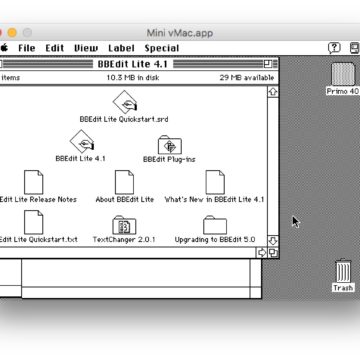
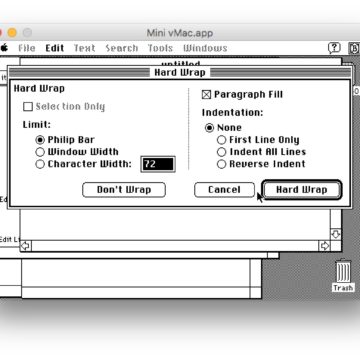
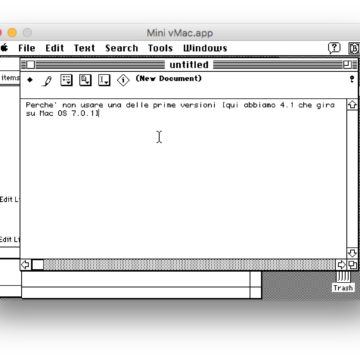
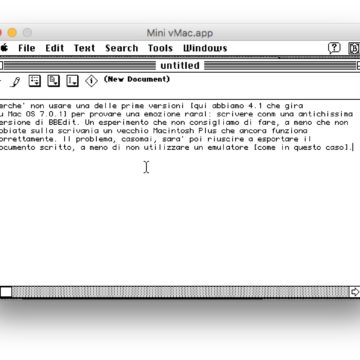
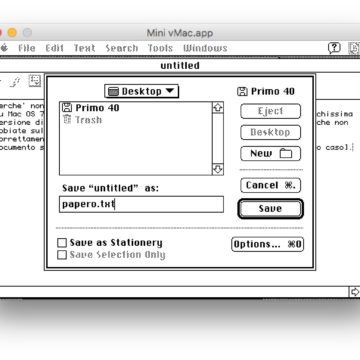
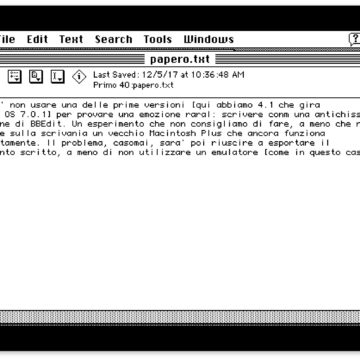
Here on Cyber Layman we have always carefully followed the evolution of BBEdit: we reviewed the previous version, that is 11, we reported the 12 update, but we had also reviewed version 9, and always kept an eye on software development.
At the time, we talk about the distant 2001, it was news to discover that BareBones, the software house behind BBEdit, had brought its software to MacOS X: for many developers it was a necessary and sufficient condition to migrate to the new Unix version of the operating system of Apple (because at the time of resistance there were and not a few). Not only that, but we have always followed with interest (and used) also TextWrangler, the free version of the BareBones text editor, which was recently stopped due to the release of the new version of BBEdit 12. The reason is simple: the new BBEdit has a “demo” mode with full functionality which, if you do not purchase the program, stops after 30 days.
After the thirty days the basic functionalities for text editing will continue to be available at a level substantially similar to that of TextWrangler. So why keep two names and two code bases, when it can be done with only one product, which thus becomes even more popular? Said and done, BBEdit is the “Jack of all trades” also in this case.
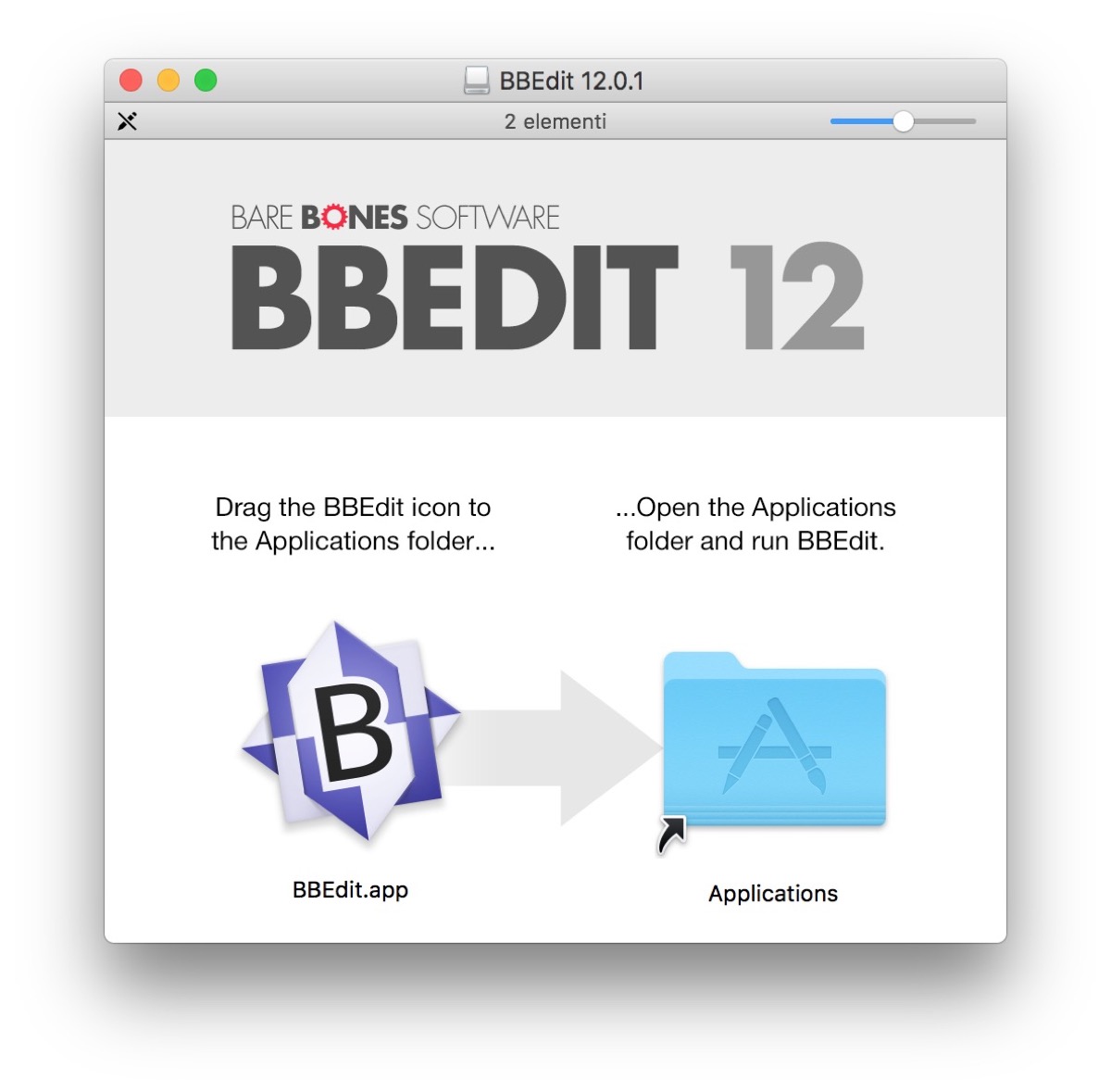
Only outside the Mac App Store
BareBones was one of the companies that had decided to keep two versions of its app: one could be purchased directly from the Mac app store, and the other from the company website. Aside from the price, what changed were just a few features. Notably, since the macOS sandbox for programs that are installed from the Mac App Store blocks many less canonical activities than other software, the command line part did not work, which in fact in that version was no longer installable.
Version 11 of BBEdit could therefore be bought and used safely, even if in a very partially “reduced” version also on the Mac App Store. Now, however, with increasingly stringent rules and therefore ever greater room for maneuver, BareBones has decided to close permanently this side of his business and sell BBEdit only on his site. And thank goodness it doesn't sell it by subscription, you might add. In fact, there are many developers who, for economic reasons, have decided to switch to this type of sales model (a sort of “rental” of the app or “access” to its features, rather than pure and simple purchase: this is the case in Ulysses' text). But for BareBones it is not a question of business model, but above all of functionality. Those that the company wants to put in BBEdit no longer fit if you go through the Mac App Store. So, to go full beer, here is the historic decision to leave the digital store and go, towards new and old roads.
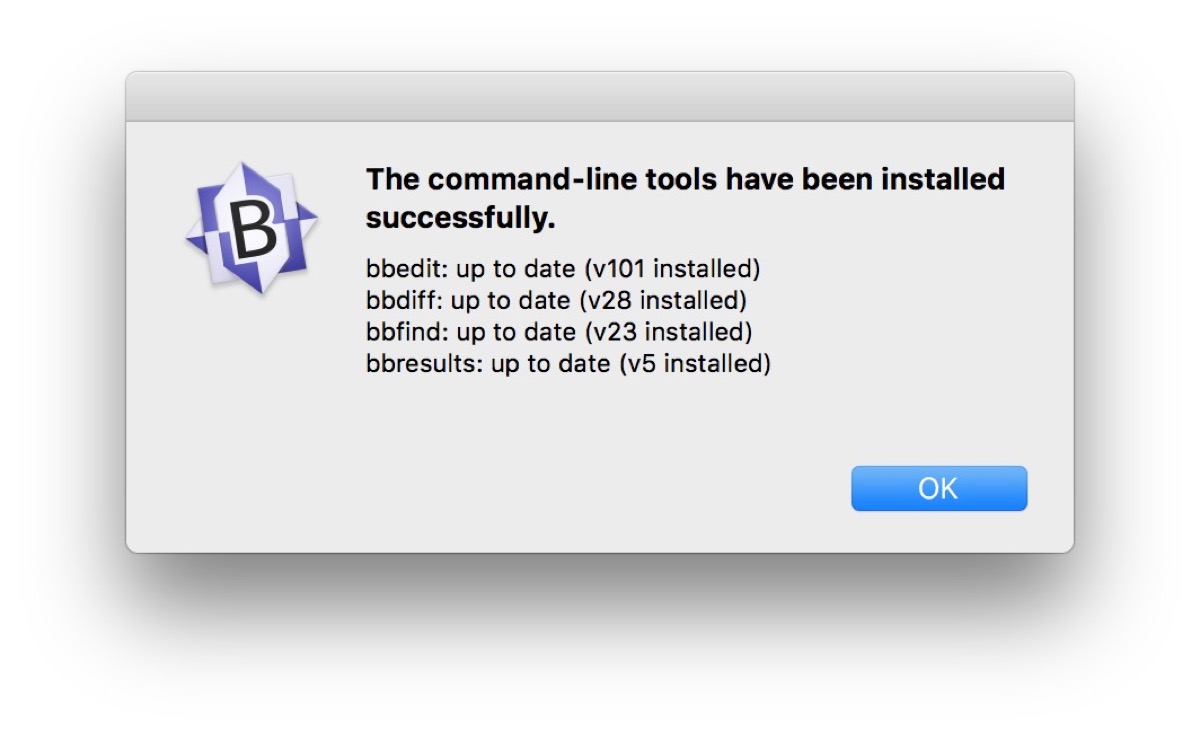
A code-oriented use
What it means to use BBEdit, any (fairly recent) version of BBEdit, is easy to say. Let's put here and in the next paragraph the things oriented to the use of this app to write code and words, and then let's talk about the news of the new version.
Remembering that BBEdit is not a word processor (a word processor, such as Microsoft's Word or our friend Scrivener) but a text editor, that is a manipulator of letters and numbers, which can be used to write anything and not necessarily prose ( or poem), we can go and see what are the fundamentals regarding the software.
The areas of interest to code writing are the most numerous. There is obviously the writing part as such, which allows you to create lines of text with variable length (from infinite to soft and hard wrap) and with different formats (little and big endian) oriented to different types of document structures ( Unix, Windows, old for Mac). This is the first part of the most important legacy as a text editor for programming, that is the function for which BBEdit was originally born when the developers (and notably Rich Siegel) created Macintosh software in Pascal capable of overcoming the limit of 32K file using THINK Technologies “PE” text engine.
The second interesting dimension for software developers has to do with architecture. Over time BBEdit has been enriched and added many features and has also changed its architecture. The highlight was the addition of plugin support, the ability to script first with Apple Script technologies and then with Unix technologies, and color the syntax of various programming languages. This last aspect, combined with the plugin architecture, allowed the software to make its qualitative leap in the nineties, when third parties created plugins for HTMIL, at the time a language unknown to developers and today perhaps the real reason. depth of the most successful of BBEdit.
The third dimension is that instead of connection management: BBEdit has always followed the various technologies promoted by Apple, starting with the various OpenDoc and PowerTalk, but soon also married FTP and SFTP. In practice, making the software a tool that does not need any other help to be able to “move” the text created directly from the editor to the server where it will be executed. Not a little and not bad.
Fourth dimension is that of the management of regular expressions, enhanced by integration with Unix Grep (the small Unix app stands for g / re / p ie: Globally search a Regular Expression and Print), which is in the “belly” of macOS , but which had been in BBEdit's eye for some time. With the use of RegEx, which we must not forget are one of the cornerstones of computer science theory and formal languages, the power of text manipulation becomes enormous.
Regular expressions allow you to find a set of letters and numbers that define a search pattern, starting from the simplest methods (“search” and “search and replace”) up to increasingly complex expressions: a type of search is that given by :
(?





